I try to visit eastern Oregon at least once a year. I especially love the spring, when the high-desert plants are green from winter rains and snow, and temperatures are moderate. This trip took our small group as far as the Alvord desert, with stops at many natural sites along the way.
We traversed a landscape consisting of the borderlines between forested mountains, dramatic canyons, wetland oases, dry lakes and of course miles of open sagebrush like this.
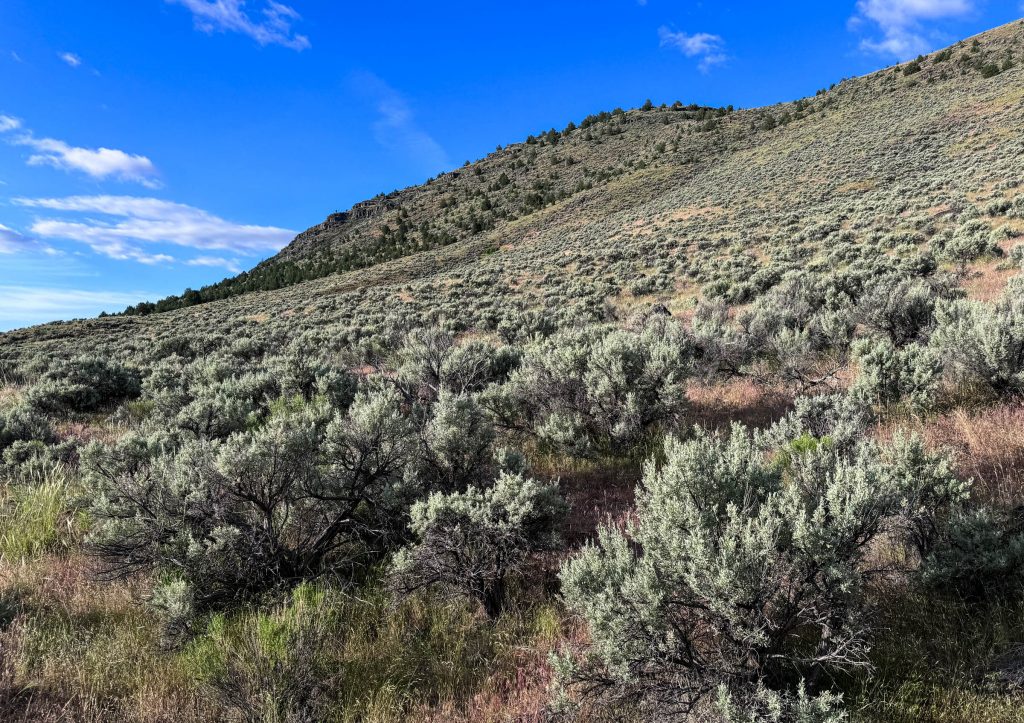
Of course, wherever one goes, there are birds! Surprised? This high desert environment is home to a number of species I seldom have an opportunity to see. One of these is the Gray Flycatcher, an unassuming textbook example of a ‘little gray bird’ one might chase through a mix of forest and sagebrush.

As it was spring, lots of young birds were fledging. Having left the nest, these young birds are figuring out how to navigate the world. This is an amateur American Kestrel, intending to go pro in the coming year.
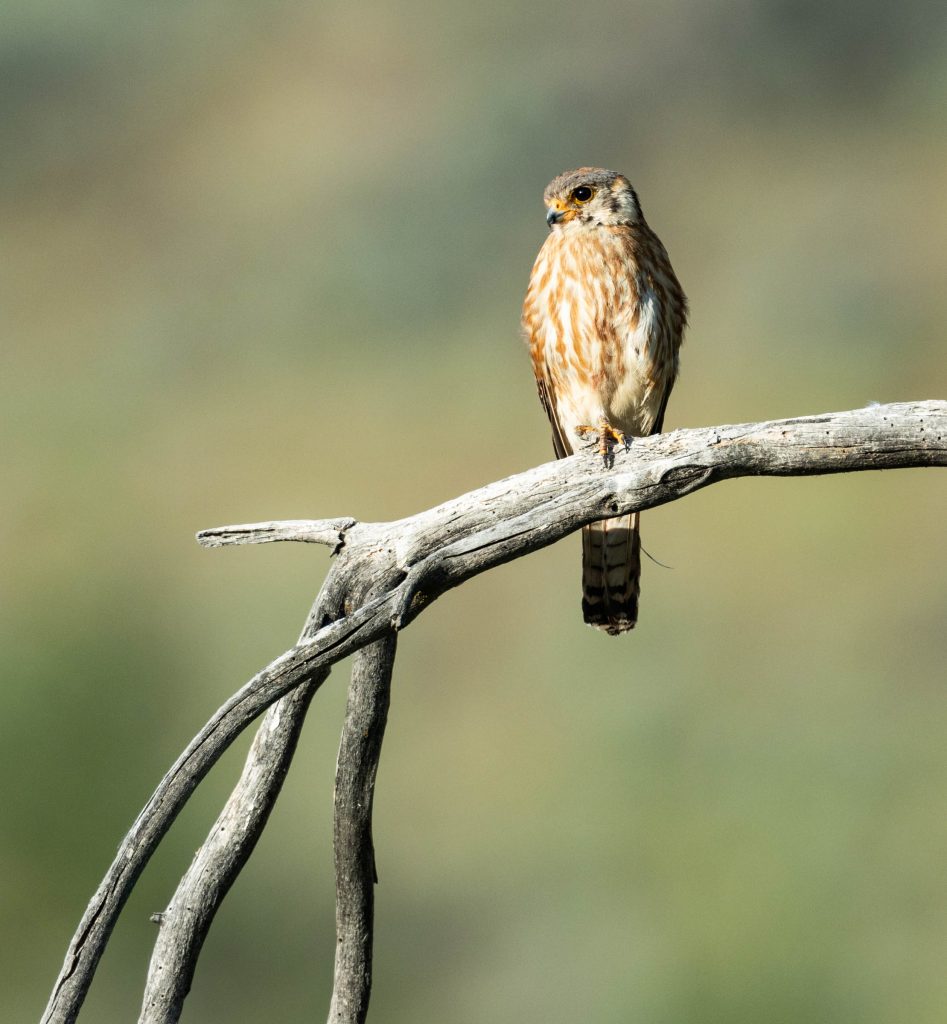
The melting snows of Steens Mountain funnel down a series of canyons to the desert below. This lush habitat is an ideal home for the boisterous Yellow-breasted Chat.
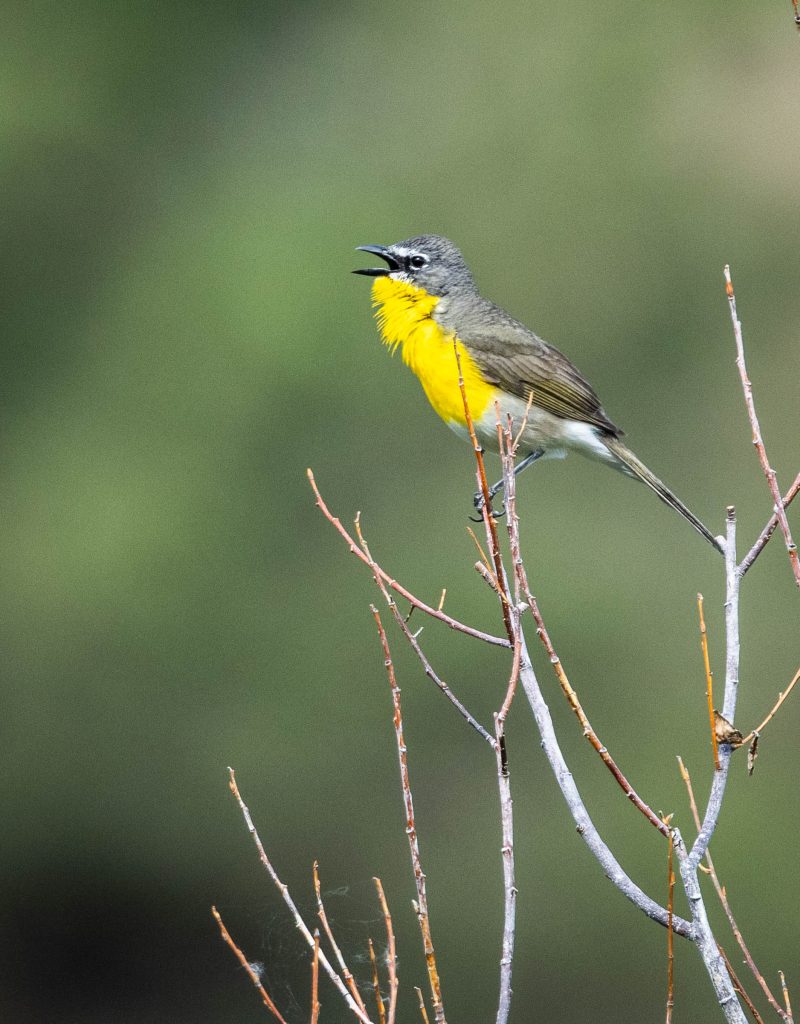
In the dry rocky sagebrush, the Rock Wren typically sings from the highest point it can find. But it is a Rock Wren, and you can of course find them on rocks.
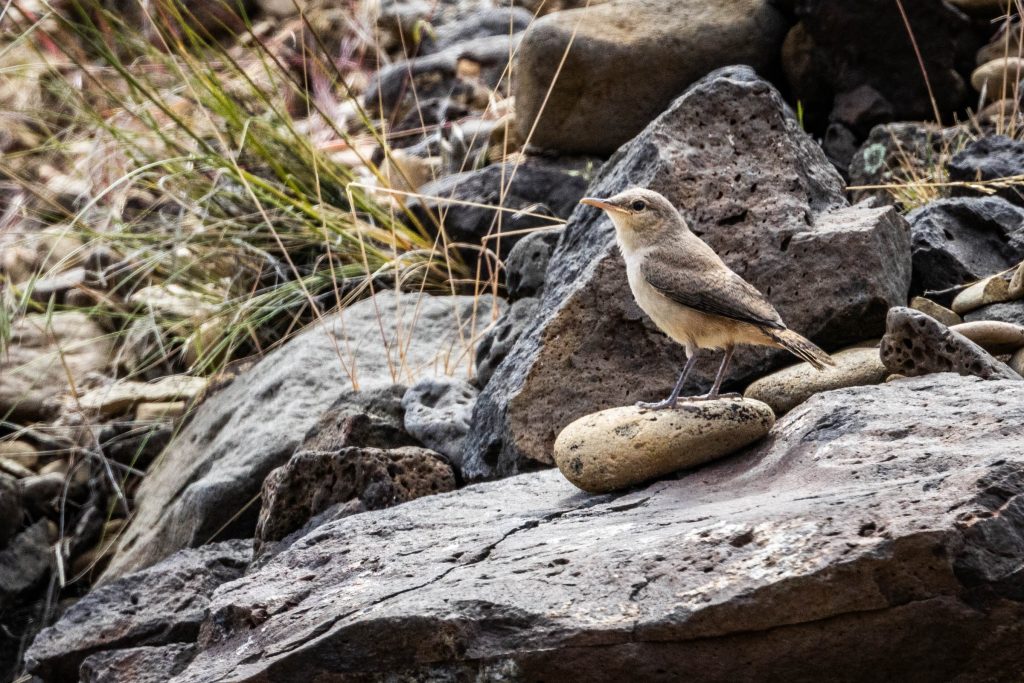
We passed this Swainson’s Hawk warming up in the morning sun. These raptors migrate to South America in the winter, then drift along the air currents to the North American west during the summer.
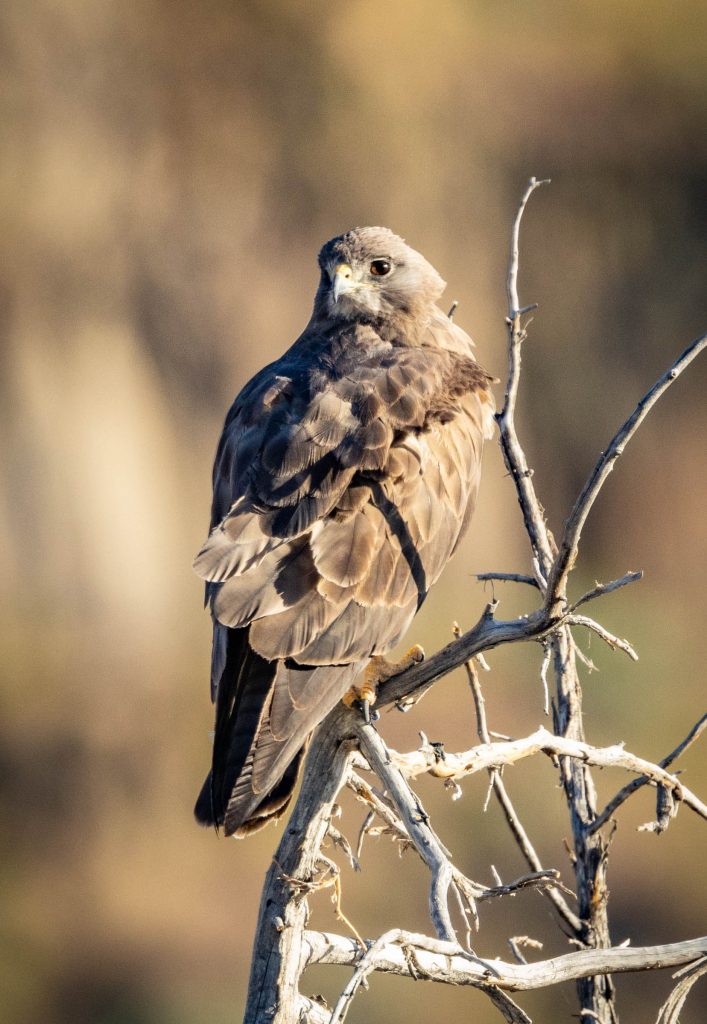
Steens Mountain rises above this landscape to an elevation of nearly 10,000ft. To the west, the slope is steady and gentle with long alpine meadows and U-shaped valleys carved by glaciers during the Ice Age. To the east, the Steens Mountain escarpment drops steeply down into cliffs and canyons.
As the prevailing winds drift across and up the western slopes of Steens Mountain, the rise in elevation acts like a sponge, sucking all the moisture out of the sky. This dynamic creates a severe rain shadow below the eastern cliffs. Long ago in a cooler age, the heights of Steens Mountain fed a lake to the east. But today this lake is mostly dry, known as the Alvord Desert. The cracked flat surface extends about 6 miles wide and 12 miles long. When we visited, shallow standing water covered about a square mile in the northern part – evidence of a wet winter.
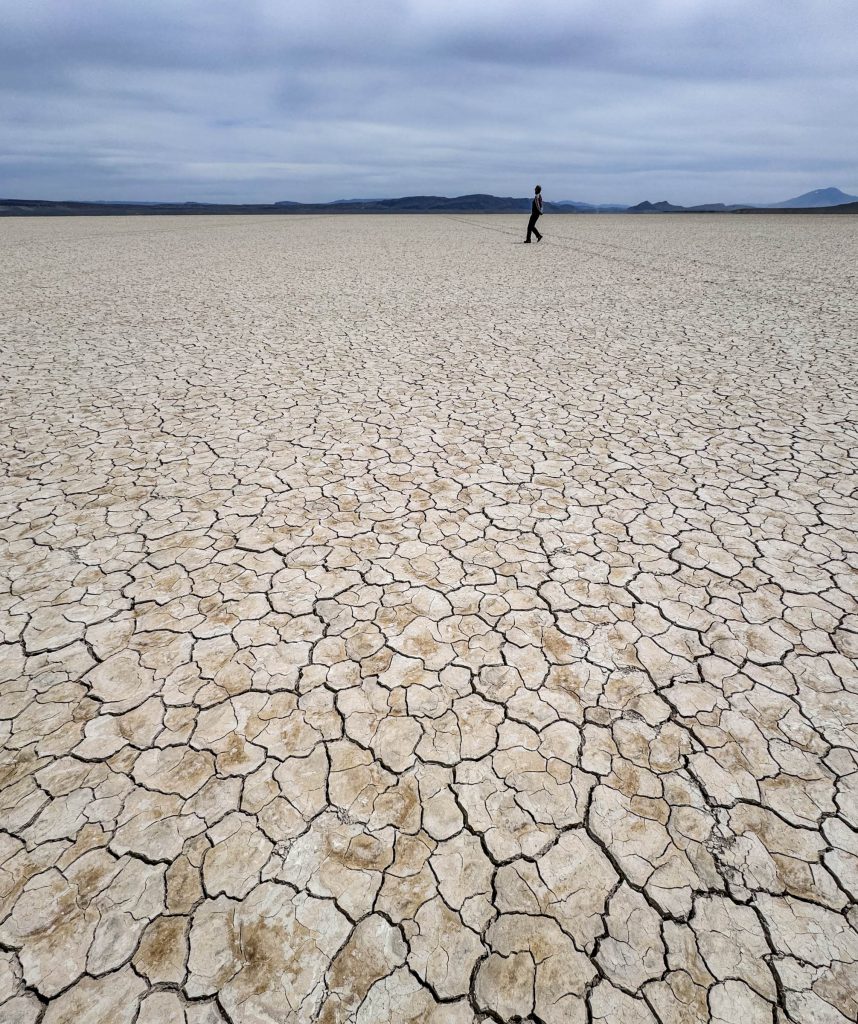
The dramatic canyons on the eastern side of Steens Mountain each channel a small stream, a lifeline for an entire micro-ecosystem. We only had time for a short foray into one of them – Pike Creek. The trail started out great, and would be an excellent longer hike, maybe a good backpacking overnight location. I’m sure we’ll be back.
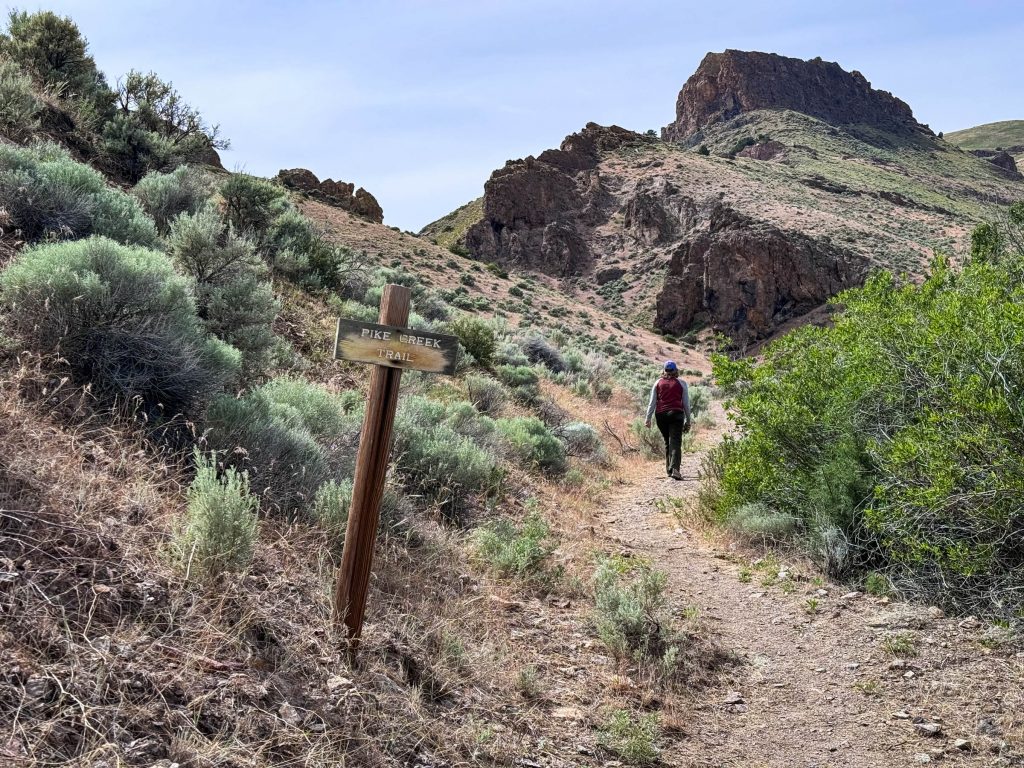
This is about as far as we got up Pike Creek – not far at all. I promise that whatever lies beyond that next bend in the trail will not elude me forever.
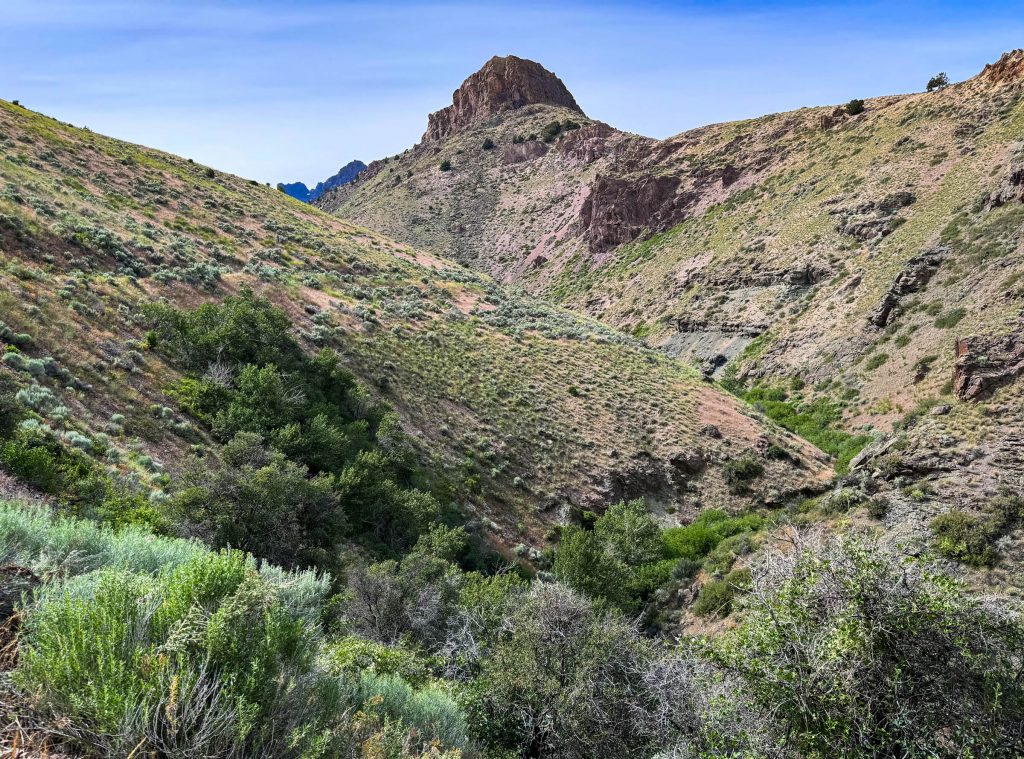
One of our primary goals of this trip had nothing to do with the birds, or the landscape. Instead, it was In a Landscape. That’s the name of the musical concert series by pianist Hunter Noack. He sets his concerts in wild natural areas throughout Oregon and beyond. This is a unique way to enjoy great music in places where one’s soul finds inspiration.
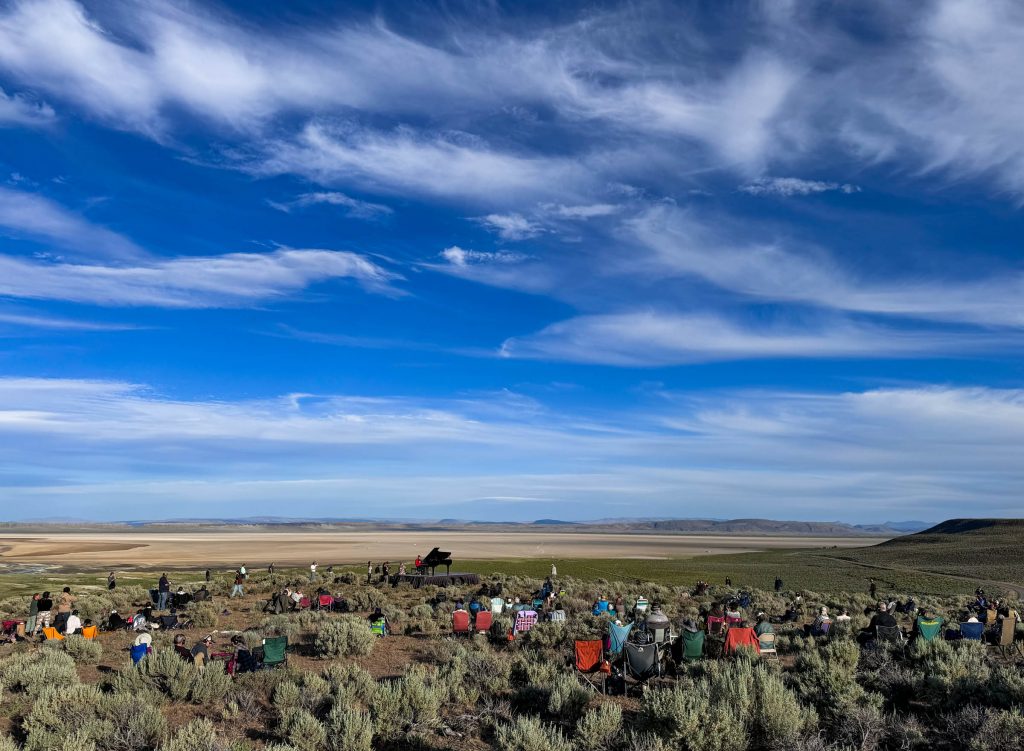
Hunter’s performance attracted an audience of local residents and travelers from afar, all sharing in a unique experience overlooking the Alvord Desert. As we traveled along, the majority of the people we met along the way converged at this concert – it was the talk of the town, even if that town has a population of 11.
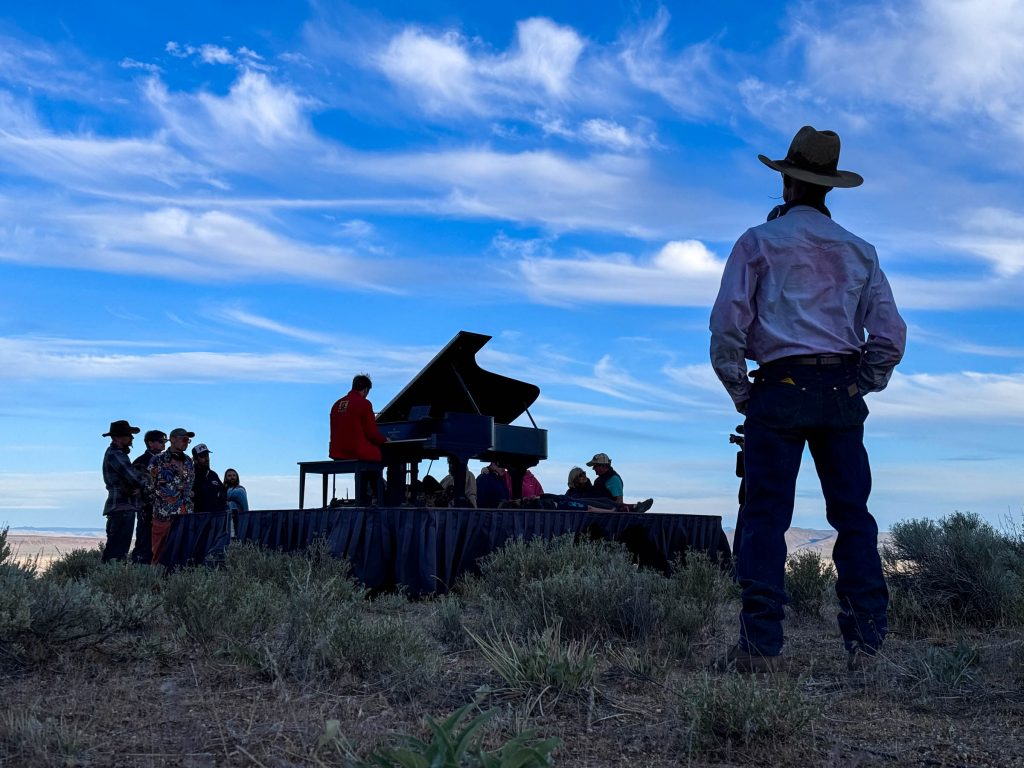
We later returned to below the cooler, wetter, western side of Steens Mountain. All that cool moisture from the top drips down the slopes sustaining a series of rivers and wetlands ending in a small inland sea called Malheur Lake. The water level of Malheur Lake fluctuates throughout the seasons, as well as year to year. In general, it’s been getting smaller and drier each year. However this year, 2024, the precipitation was above average, a welcome respite from the longstanding trend toward drought. (Note: I’m not sure the link will remain accurate for 2024, but it’s been a good water year).
This oasis in the desert attracts a lot of wildlife and most visibly – birdlife. The Wilson’s Snipe creates an eerie winnowing sound by rushing air through its tail feathers as it zooms past. This bird was performing a daytime display moments before landing on this post.
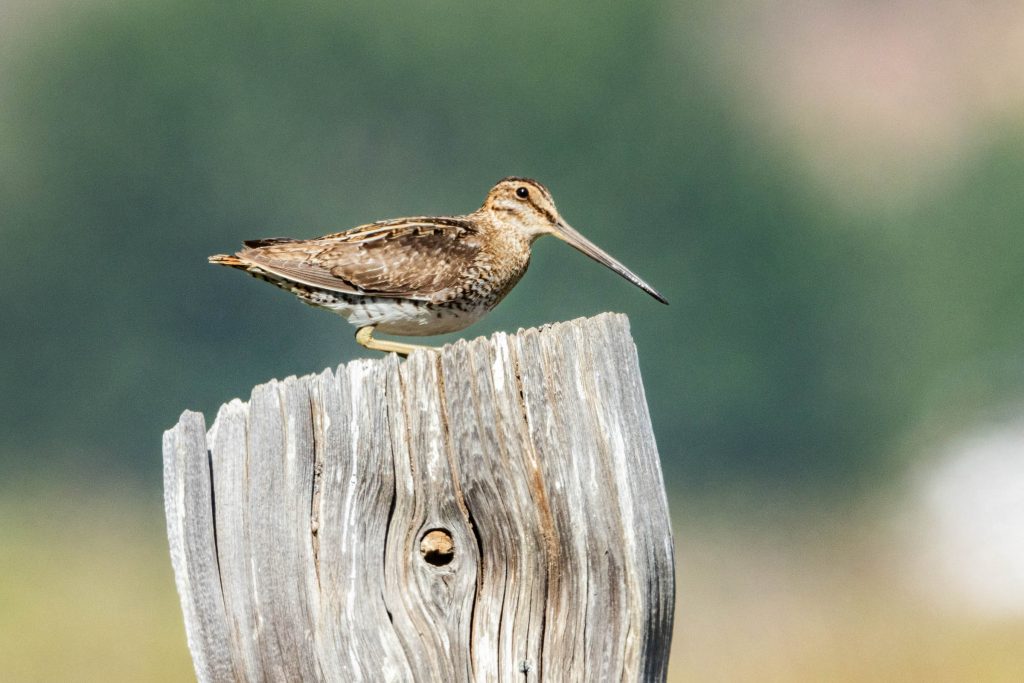
The meadows in this fertile valley support a healthy population of Western Meadowlarks. These birds have a deceptively loud voice. If you hear one, it’s probably twice as far away as you think it is.
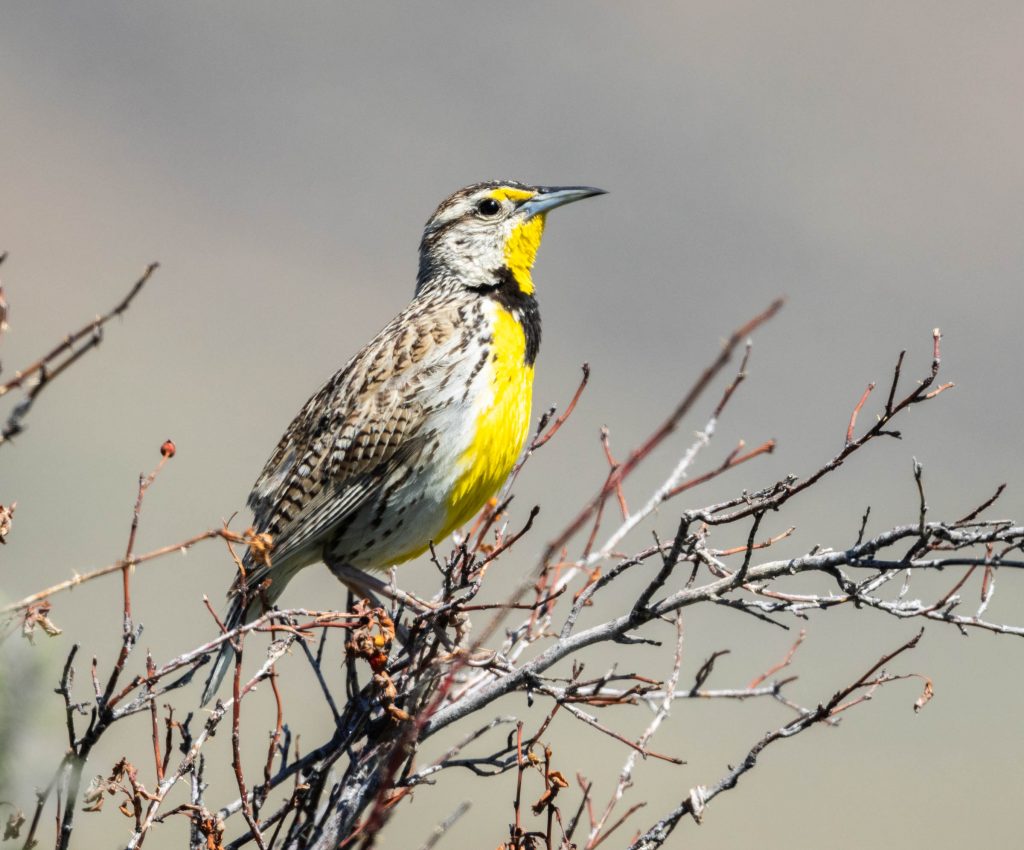
Black Terns spend their summers in inland lakes and waterways like Malheur. A small group of them were flying in circles above a pond, dipping into the water periodically – likely snagging unwary fish or tadpoles from just beneath the surface.
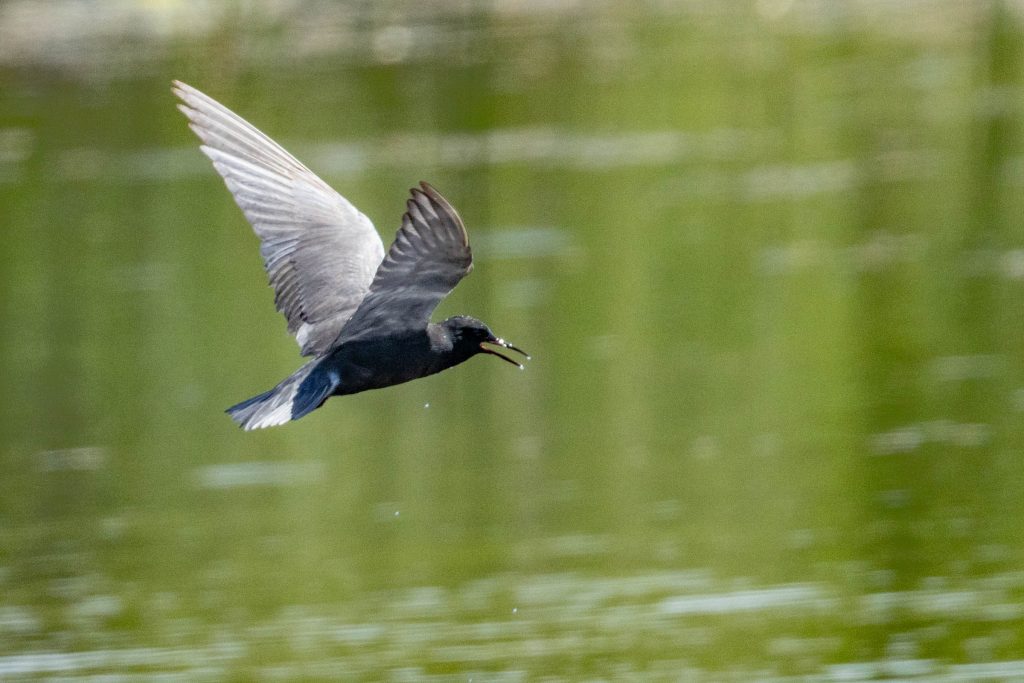
The Eastern Kingbird is a flycatcher more common in the eastern US. But a group of these birds discovered western bugs are every bit as tasty as eastern bugs, and moved right in.
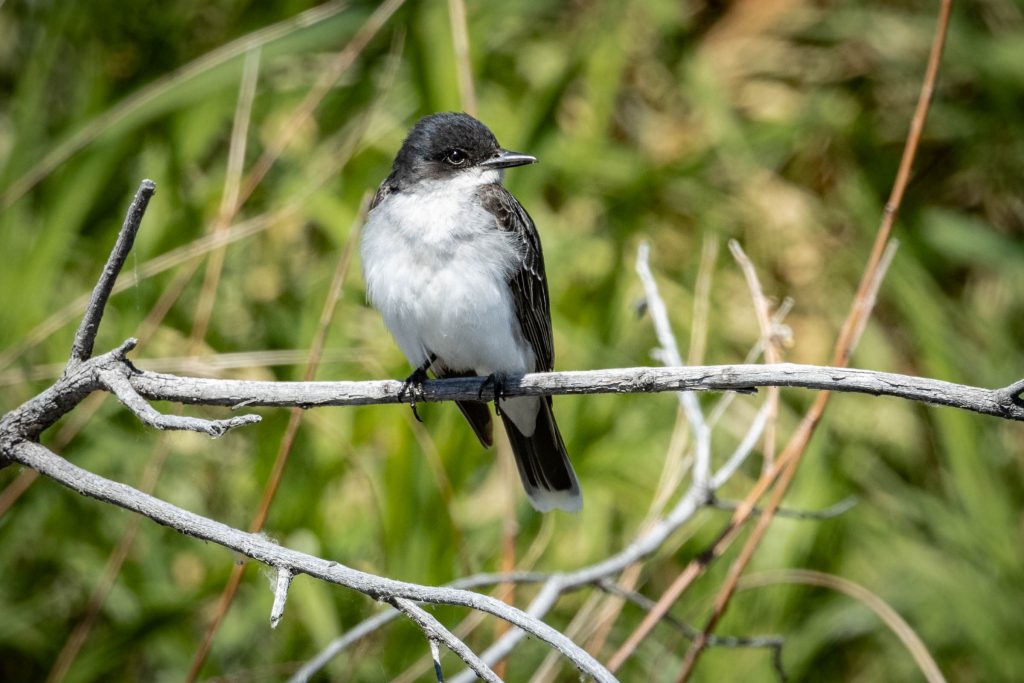
The Redhead is a duck I don’t often see in Oregon, but in a place like Malheur, it’s just what you’d expect to find – the unexpected.

One bird fully did expect to find in this area is the perfectly named Yellow-headed Blackbird. These boisterous birds produce beguiling vocalizations, always entertaining, and difficult to ignore.

Heading away from the wetlands to the sagebrush expanse surrounding Malheur, the mix of birdlife changes again. What could be more appropriate to find among miles of endless sagebrush than a Sagebrush Sparrow. This “little gray bird” eluded me for 53 years, but no more! That’s what you call a lifer.
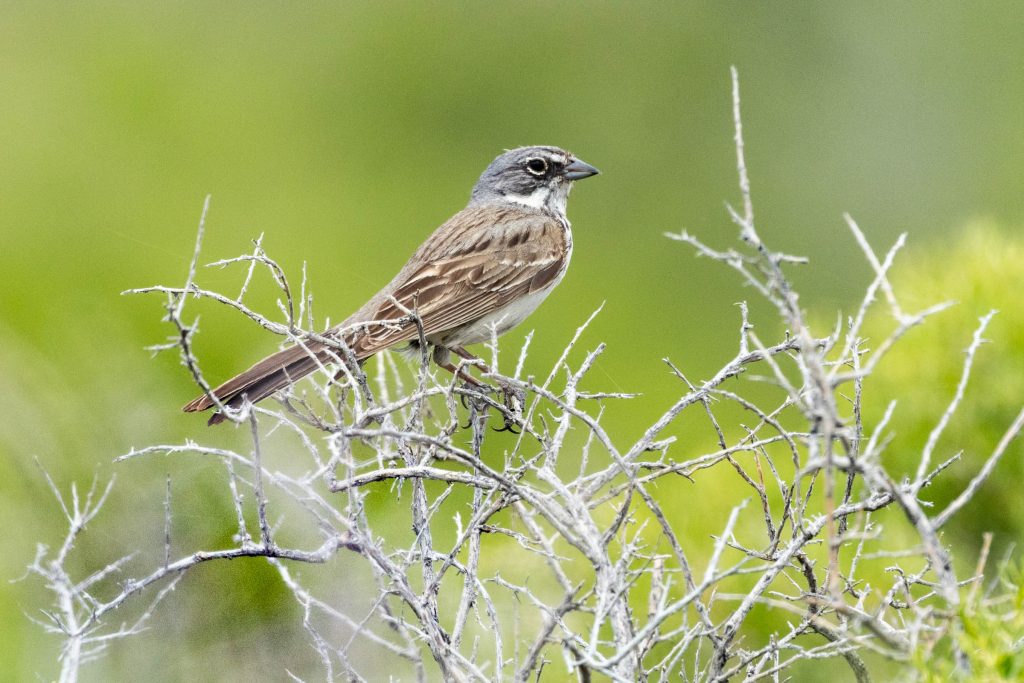
For little insect-eating birds, times were flush – we were in the middle of an explosion of grasshoppers, perhaps an aftereffect of the wet winter. This Lark Sparrow was taking full advantage of the situation.
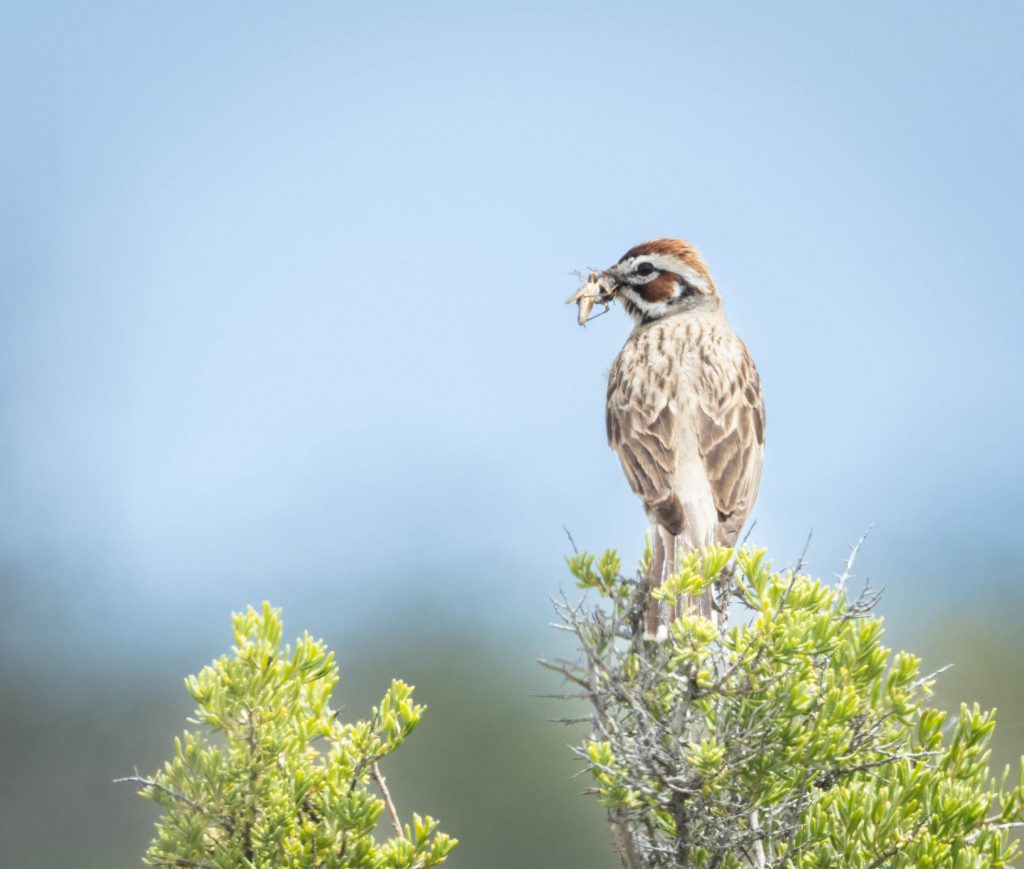
The Loggerhead Shrike is a ravenous insectivore.. and lizardivore… (and even birdivore if the situation presents itself). Nicknamed the “butcherbird”, they will impale excess bugs they catch on thorns and barbed wire for later consumption. And maybe this process ages the bug flesh a bit, improving flavor. I haven’t actually tried this myself… but I just have a hunch it’d work like that. Maybe someone with a more adventurous palette can try this and let me know.
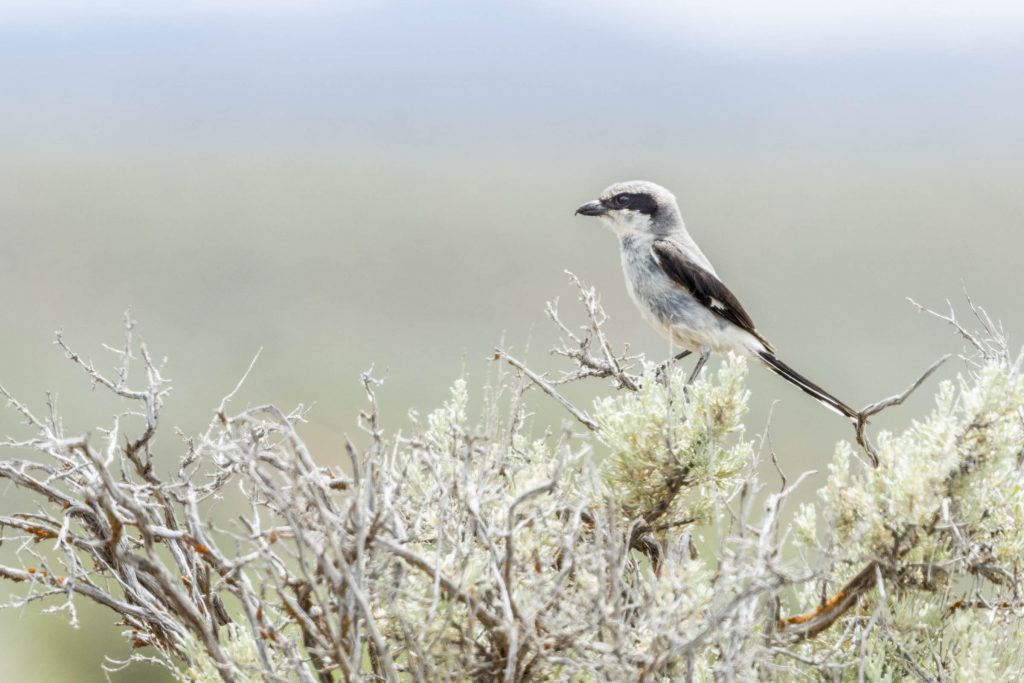
This rolling sagebrush landscape is interrupted by rocky cliffs, providing an ideal nesting situation for large raptors. This Prairie Falcon was on its nesting ledge, a couple hundred feet above the sagebrush expanse.
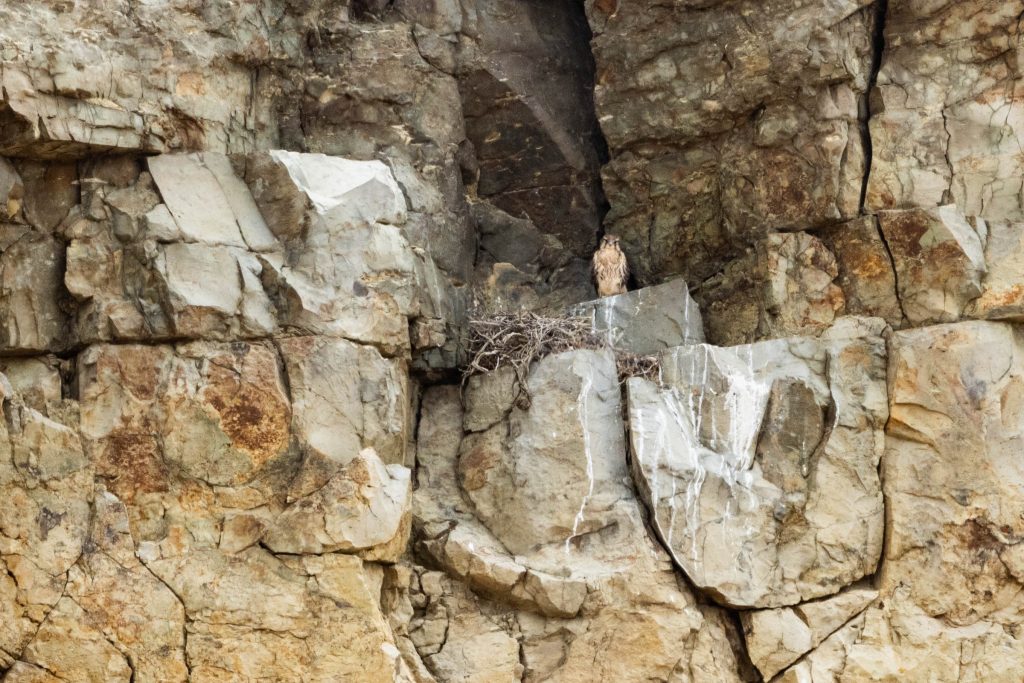
Another Prairie Falcon soared above us, perhaps checking if we were safe to ignore, or safe to eat.
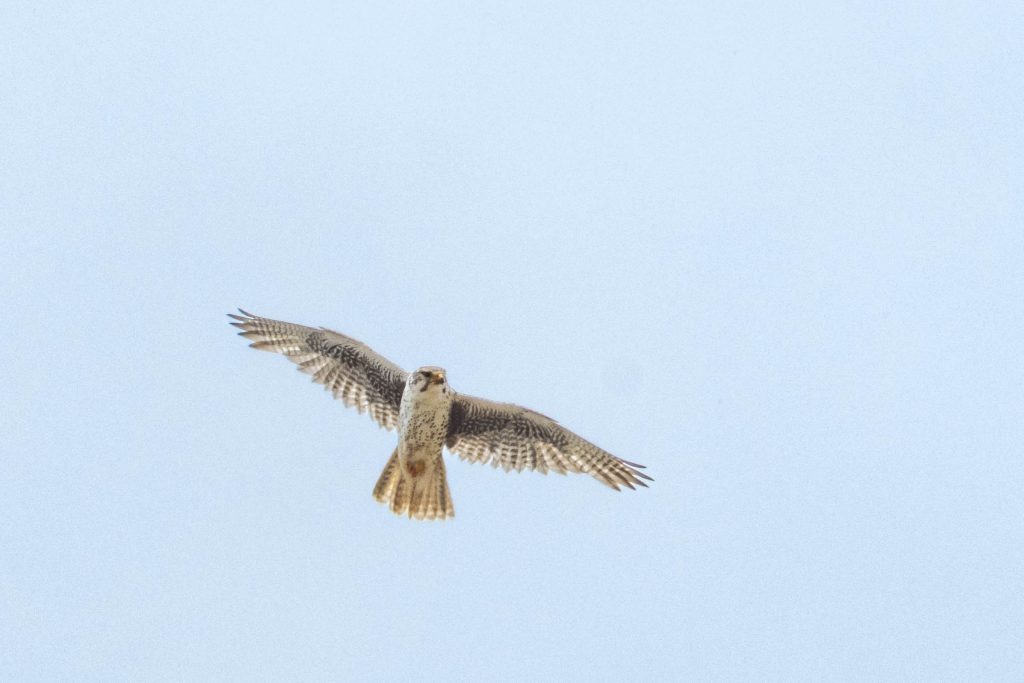
A few miles down the road on another cliffside ledge, a young Golden Eagle was the last of its brood to leave this historic nest. Golden Eagles have been reported at this exact location since at least 1875. It’s likely they’ve nested here for millennia, as it’s an ideal location overlooking an ideal habitat.
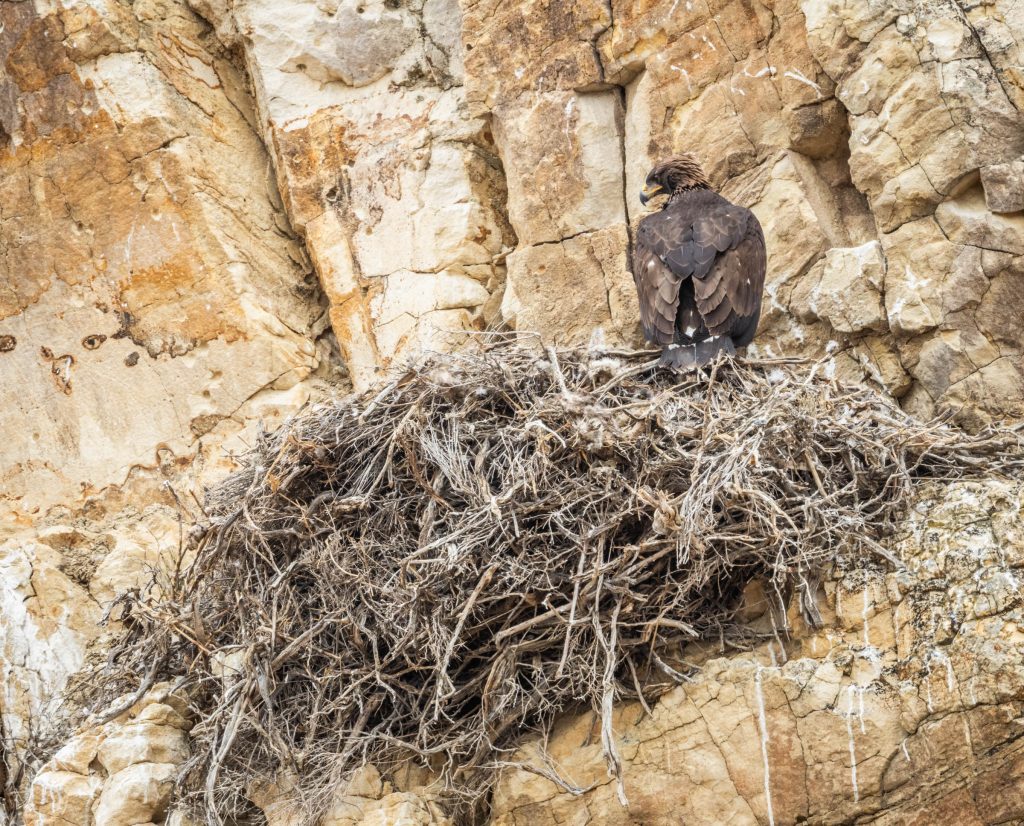
The local Golden Eagles feed primarily on rabbits, and rabbits need sagebrush to thrive. The ecosystem here is a delicate equation – if anything tips the balance one way or another, it can all come undone. At the moment, one of the biggest threats to this balance is hemorrhagic fever, which is killing rabbits throughout the west. But for now, this particular batch of eagles did well.
Closer to earth… in fact, often IN the earth, is the Burrowing Owl. These curious and hardy little birds are a bit more tolerant of their human neighbors. This one was resting on a fence post – only opening its eyes for a moment as we crept by.
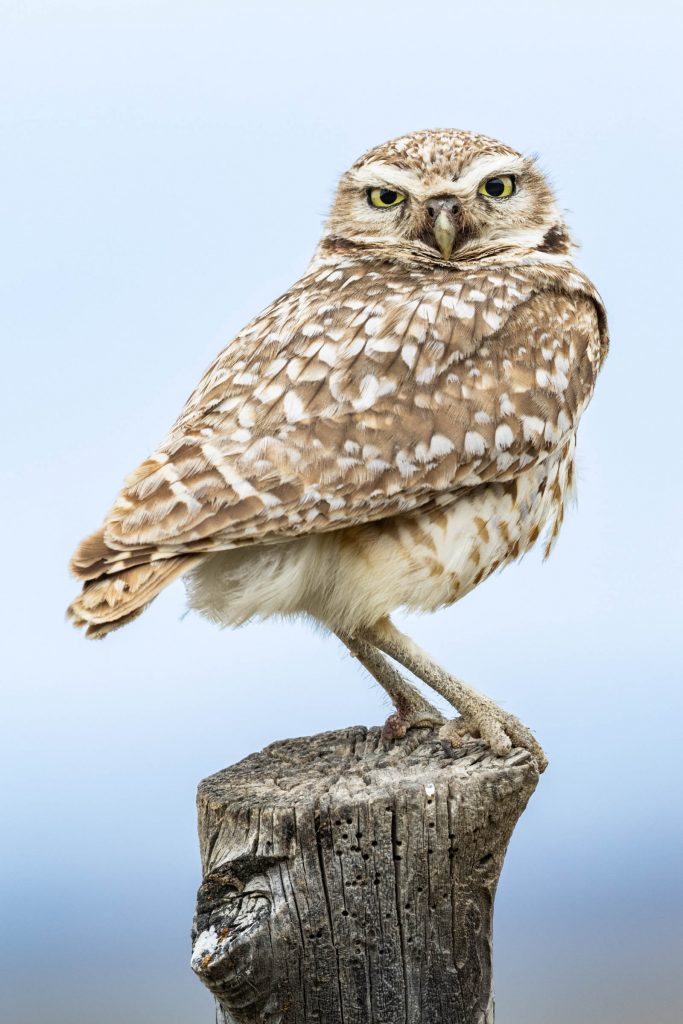
As we were leaving the area, we had one last bonus bird. A parent Ferruginous Hawk watches over the last two of its brood to leave the nest.
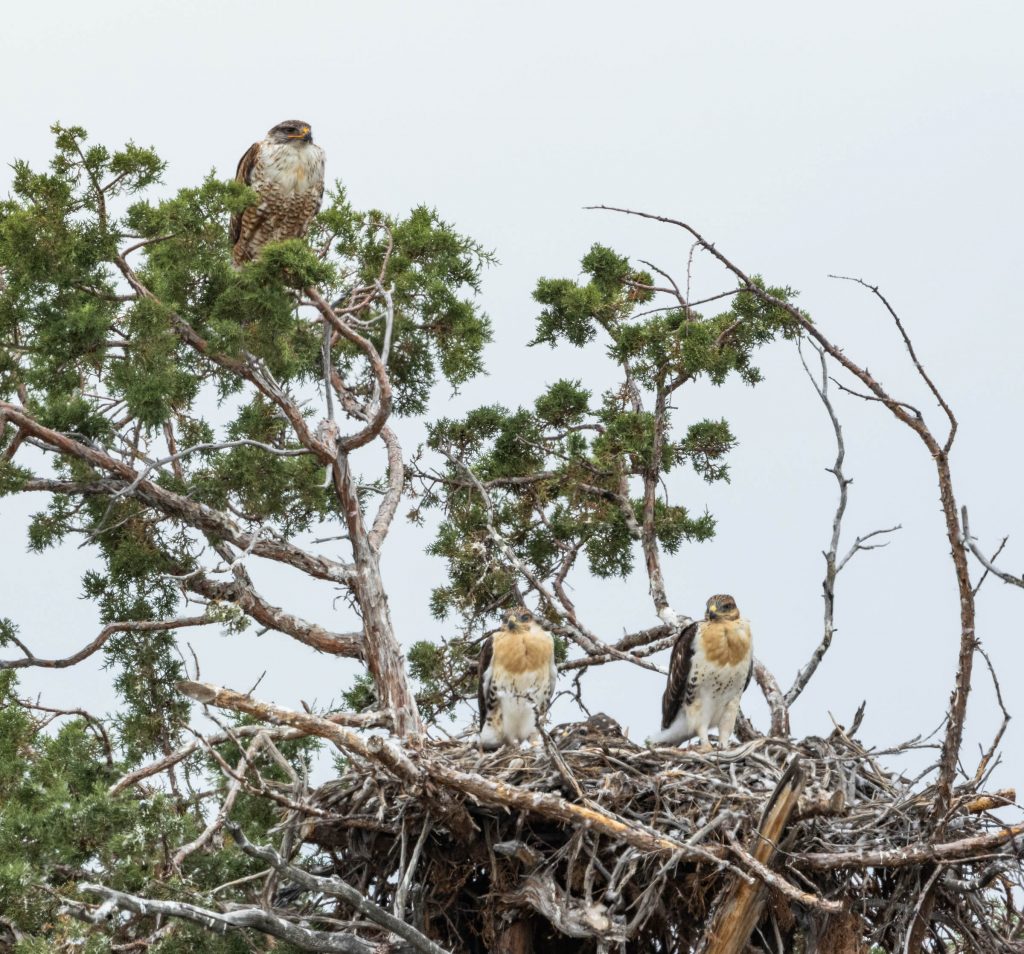
So that’s what was happening in certain parts of Eastern Oregon, for a couple days in the late spring of 2024.